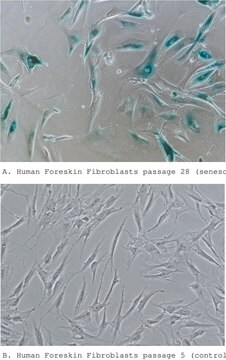MABC958
Anti-TIM4/TIMD-4 Antibody, clone Kat5-18
clone Kat5-18, from hamster(Armenian)
Sinónimos:
T-cell immunoglobulin and mucin domain-containing protein 4, TIMD-4, Spleen, mucin-containing, knockout of lymphotoxin protein, SMUCKLER, T-cell immunoglobulin mucin receptor 4, TIM-4, T-cell membrane protein 4, TIM4/TIMD-4
About This Item
Productos recomendados
biological source
hamster (Armenian)
Quality Level
antibody form
purified immunoglobulin
antibody product type
primary antibodies
clone
Kat5-18, monoclonal
species reactivity
mouse
technique(s)
flow cytometry: suitable
neutralization: suitable
isotype
IgG
NCBI accession no.
UniProt accession no.
shipped in
dry ice
target post-translational modification
unmodified
Gene Information
mouse ... Timd4(276891)
General description
Immunogen
Application
Flow Cytometry Analysis: Representative lots were conjugated with biotin and detected Tim4 immunoreactivity among mouse Mac1+ peritoneal cells (Miyanishi, M., et al. (2012). Int. Immunol. 24(9):551-559; Miyanishi, M., et al. (2007). Nature. 450(7168):435-439).
Neutralizing Analysis: A representative lot blocked Tim4-mediated engulfment of apoptotic CAD-/- thymocytes by murine peritoneal macrophages in a dose-dependent manner in culture (Miyanishi, M., et al. (2007). Nature. 450(7168):435-439).
Neutralizing Analysis: A representative lot, when administered via i.v. injection, significantly suppressed the phagocytosis activity of F40/80+ macrophages in the thymus of CAD-/- mice following intraperitoneal dexamethasone injection to induce apoptosis in the thymus (Miyanishi, M., et al. (2007). Nature. 450(7168):435-439).
Apoptosis & Cancer
Apoptosis - Additional
Quality
Flow Cytometry Analysis: 0.1 µg of this antibody detected TIM4/TIMD-4 in Ba/F3-Tim4 cells overexpressing mouse Tim4.
Target description
Physical form
Storage and Stability
Handling Recommendations: Upon receipt and prior to removing the cap, centrifuge the vial and gently mix the solution. Aliquot into microcentrifuge tubes and store at -20°C. Avoid repeated freeze/thaw cycles, which may damage IgG and affect product performance.
Other Notes
Disclaimer
¿No encuentra el producto adecuado?
Pruebe nuestro Herramienta de selección de productos.
Storage Class
12 - Non Combustible Liquids
wgk_germany
WGK 2
flash_point_f
Not applicable
flash_point_c
Not applicable
Certificados de análisis (COA)
Busque Certificados de análisis (COA) introduciendo el número de lote del producto. Los números de lote se encuentran en la etiqueta del producto después de las palabras «Lot» o «Batch»
¿Ya tiene este producto?
Encuentre la documentación para los productos que ha comprado recientemente en la Biblioteca de documentos.
Nuestro equipo de científicos tiene experiencia en todas las áreas de investigación: Ciencias de la vida, Ciencia de los materiales, Síntesis química, Cromatografía, Analítica y muchas otras.
Póngase en contacto con el Servicio técnico






